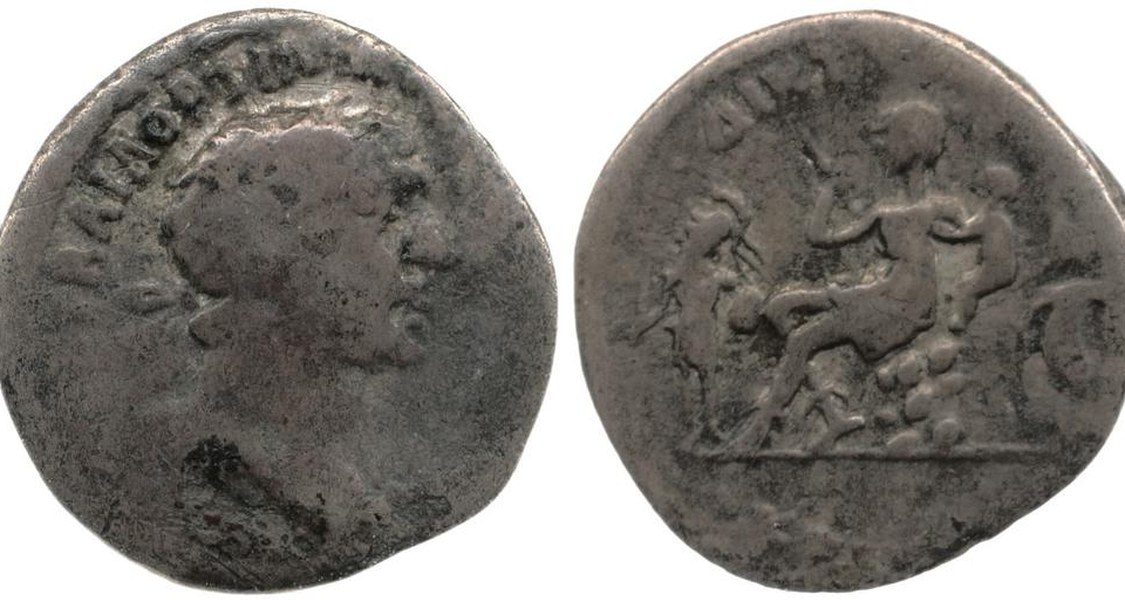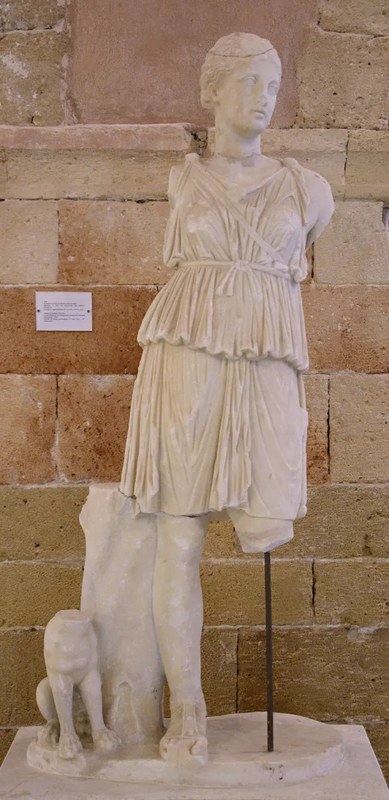Main Content
Diktynna: Cretan goddess - Greek nymph?

Dissertation project: Adrian Kinzig M.A.
The period of Hellenism and the subsequent Roman rule until Christianisation can be understood as a kind of "globalisation" of the Mediterranean region. The Greek world grew ever closer together, the exchange of political and economic exchanges produced a common cultural area, and religion was also affected by this development. Deities and their cults wandered through the Mediterranean, emerged anew, merged with each other or disappeared forever.
The evidence for these processes of cult transfer is geographically widely scattered. Especially in the case of local, so-called minor deities, they are also difficult to prove. An exception to this is the nature goddess Diktynna, who presents herself in the sources in many different ways and who is systematically examined for the first time in the context of my dissertation. The evidence of her worship is disparate: in cult inscriptions she is a powerful goddess, but in the literary tradition she is regarded as a nymph. On the one hand, she is considered typically Cretan, on the other hand, cults of Dictynna are found throughout the Eastern Mediterranean and stories about her spread throughout the Greek and Latin-speaking world.

The question of my dissertation project is therefore: Who is Diktynna? However, this question will not be answered with a biography, but rather the development, dissemination and reception of the goddess and her cult will be traced. In doing so, the tension between "regional" and "panhellenic" concepts of cult and God will be considered, and the concepts behind them will be shown and questioned. The cult of Diktynna probably originated on Crete between the so-called "Dark Centuries" and the Archaic period under Luwian and Doric influence. In the following centuries, it spread throughout the Aegean region, where the goddess partly formed a unit with the Cretan Zeus, but was also equated with Artemis. All in all, there is a great variety of sources concerning the goddess and her cult: she is mentioned not only in ancient comedy and tragedy, but also as a state cult in Commagene. She appears as an epithet of Isis in Egypt and as a synonym for Diana even in Rome. In addition, an important regional cult always remained in Crete, which played a major role in local politics due to its location for trade and as a repository for contracts.
Her diversity makes the goddess Diktynna an interesting object of research. She and her cult not only precede Hellenism, but are shaped by it through the coalescence of the Greek world and can be seen as a typical product of it.
The sources are based on three pillars: First, the literary tradition, in which mostly the name "Diktynna" is explained. Then the archaeological sources, of which the Diktynnaeum on Crete is probably the most important, and finally the numerous inscriptions that come from many Greek centres, from Sparta to Athens to Amyzon. They deal with oaths, local customs and property arrangements, provide references to calendrical systems and, above all, to Cretan exile communities.
In my dissertation project "Diktynna: Cretan Goddess - Greek Nymph?" I am specifically investigating the example of Diktynna using literary, archaeological and epigraphic sources:
- The historical roots of the Cretan cult of Diktynna. On the island of Crete, the diverse cultures of the central Mediterranean met during Hellenism, which makes it possible to observe synergies and conflicts in dealing with one's own and foreign cults in an exemplary way.
- The spread of the cult in the ancient Mediterranean. The presentation of the cult in ancient sources differs regionally, which makes it necessary to examine the ways in which it spread. Political, economic and social factors are at the forefront of the examination.
- The organisation and festivals of the Dictynnian cults. What did the cults in the various cities have in common and where can regional differences be found? In a special way, the challenges that arise when dealing with so-called smaller cults, such as a fragmented source landscape and a heterogeneous state of research, are to be shown here.
- The role of the island of Delos and the Ptolemaic court in the reception of the image of Dictynna, Especially the much-received Kallimachos (Call. Hym. 3) shaped the traditional image of Dictynna in ancient literature (esp. Paus. 2,30,3 and Anton. lib. 40)). The question of whether there was a "Dictynna" by Cato (cf. Cinna frag. 14) and what effects this had on the literary reception of the Roman period will also be examined.
- Diktynna's relationship to other deities of the ancient world. Diktynna's connection with Britomartis is particularly prominent because they are equated with each other in literature and are sometimes addressed as nymphs, sometimes as goddesses. This specific connection, however, cannot be proven in archaeological and epigraphic sources. Other equations are made with Artemis, Isis and the Aiginetian goddess Aphaia.
- The role of the cult on Crete in the Roman Empire. Road stones (e.g. AE 2004 01660, IC IV 333/334 or SEG 23 581) prove that the assets of the cult were used for the expansion of the roads under Hadrian and his successors, while the corresponding temple on the Tityros peninsula was expanded at the same time.